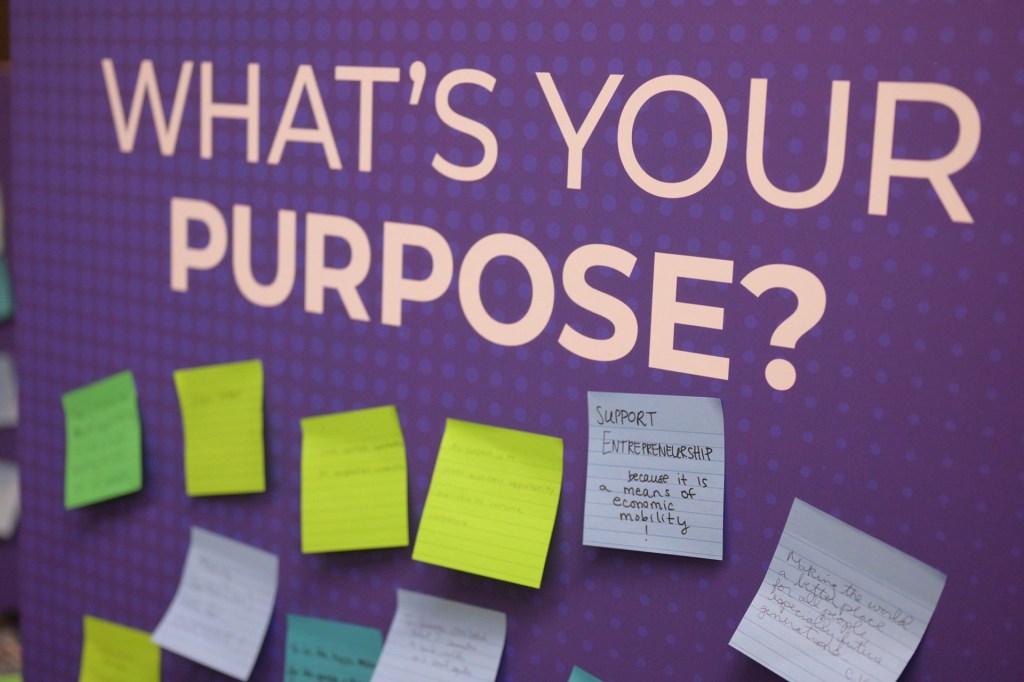Community Development Financial Institutions (CDFIs) are mission-driven to improve capital access and offer financial stability to clients whose needs are not well met by the conventional finance industry. To do this, they use strategies that enable them to customize products and provide development services. One of the questions in the Federal Reserve’s 2023 CDFI Survey invited CDFIs to describe the innovative products, practices, and partnerships they developed to better serve their clients. Approximately 350 respondents (of 453 overall) weighed in on the question. Their responses varied from brief descriptions of CDFI products to detailed accounts of multifaceted programs across business lines.
Some respondents described activities that are considered innovative relative to how conventional financial institutions operate but are relatively common among CDFIs. For example, many detailed their CDFI’s flexible lending practices, such as those related to underwriting, which accommodate borrowers with circumstances that make them ineligible for conventional loans.
This article focuses on consumer and small business products or practices that are unique within the CDFI industry. Respondents also detailed innovations in home purchase, home improvement, and real estate development finance, which were discussed in a previous post.
Consumer finance
CDFIs working in consumer finance partner with other organizations to better connect with the community, take advantage of product or client overlap, and create more efficient and effective ways for clients to meet their financial goals.
Working with partners to improve client outcomes
CDFIs reported partnering with organizations that have built trust within a community to initiate new client relationships and to help customers qualify for loans. For example, knowing that predatory lenders target unbanked and underbanked people, two CDFIs shared how they partner with place-based nonprofits to connect clients with payday loan alternatives and refinancing opportunities. One of the two also noted their organization connects with potential clients through employers, businesses, and churches.
Another CDFI coordinates in-language financial workshops through local nonprofits working in immigrant communities. The respondent shared, “Our financial coaching and financial workshops have been so successful that we don’t really need to market them. They have become a self-referring engine.”
Customizing products to complement partner programs
CDFIs develop products to complement nonprofit and public programs designed to improve people’s economic outcomes. For example, in order to facilitate transportation for employment, one CDFI offers low-cost auto loans to individuals who complete a workforce training program. Another CDFI developed housing support programs and made them available to its partner organizations’ economic mobility program participants. Aligning CDFI and partner organization activities helps program participants to access resources and reach their goals faster.
Other products build on partners’ knowledge of the communities they serve in order to improve clients’ financial outcomes. One Native-serving CDFI worked with the tribal human resources and health system to design once-a-year holiday loans that are payroll deducted for tribal employees. Another provides financial education and depository accounts to refugees and immigrants served by a local nonprofit.
Making it easier for clients to accomplish their financial goals
Other CDFIs described new products and practices designed to improve clients’ financial health. For example, one CDFI developed three apps for their clients: one for consistent budgeting; another designed to help clients save; and a third to offer flexible, fair cash advances that help clients avoid payday lenders.
“These apps allow users to enact sound financial habits and build solid foundations for individual economic growth,” wrote the respondent. Another CDFI designed a performance-based bill consolidation loan product that rewards good repayment behaviors with lower interest rates.
Recognizing that social capital can help to meet credit needs, one CDFI developed a lending circle program where small groups of clients pool their savings and are eligible to take loans from the available funds. The CDFI also offers financial education and credit building within the lending circle program.
“We shine a light on our core cultural values in our financial education and highlight the values as a means to achieve financial independence and security while giving back to our communities.”
CDFIs also tailor products and services to a community’s strengths and needs. One Native-serving CDFI shared how they designed culturally appropriate practices, noting, “We shine a light on our core cultural values in our financial education and highlight the values as a means to achieve financial independence and security while giving back to our communities.”
Having specialized knowledge about how their clients make financial decisions allows CDFIs to tailor their practices to support positive outcomes. A CDFI that provides development services to people with disabilities, for instance, ensures all of its financial coaches are certified Benefits Planners. These experts are equipped to help clients receiving public benefits navigate through changes in eligibility.
“When it comes to financial coaching for people with disabilities, the details are essential,” the respondent shared. “The wrong information can devastate a client accessing Social Security benefits.”
Layering products allows CDFIs to address clients’ interconnected financing needs. For example, one CDFI provides financing for all aspects of clean vehicle ownership in low-income and Black, Indigenous, and people of color (BIPOC) communities. “Through a combination of clean vehicle grants, charging station grants, and fair auto loan options, we are proud to help people thrive while advancing environmental and social justice at the same time.”
Small business finance
CDFIs use small business lending and services to promote entrepreneurship and wealth-building among historically underserved borrowers, particularly BIPOC and women business owners.
Improving access to capital through flexible underwriting
CDFIs have developed several new strategies to support flexible underwriting in their small business lending. Two respondents reported they use revenue-based lending, which assesses the borrower’s ability to pay based on business cash flow activity as an alternative to conventional business and personal credit scores. Another is partnering with a fintech to identify other alternative data for evaluating small business lending.
To mitigate the potential risk associated with flexible underwriting, several CDFIs reported partnering with public entities. One described a program that provides portfolio insurance for loans and lines of credit available to eligible small businesses. While loan loss reserves are a standard feature of CDFI balance sheets, this program holds CDFI-, borrower-, and public-provided funds in a loan loss reserve account. This tactic allows the CDFI to extend credit for a wider range of purposes. Another partners with its local Department of Small Business Services. The department buys CDFI-originated loans, which allows the CDFI to return lending capital more quickly.
Lowering borrowing costs
In addition to improving capital access, CDFIs are inventing new approaches to reduce borrowing costs for small businesses. Respondents described products with performance-based loan terms, where small businesses can earn full- or partial- loan forgiveness. One CDFI allows clients to earn forgiveness by participating in business advisory services. Others forgive loans after the borrower meets specific performance criteria or their stated business goals.
Setting businesses up for success
Many CDFIs provide development services and supportive programs to complement their financial services and help businesses succeed. Respondents described sector-specific development services, programs that paired financial and development services, and activities to enhance businesses’ likelihood of success.
Through partnerships, CDFIs developed sector-specific programs. Two CDFIs partnered to build an accelerator training program for local beauty salons and barbershops. Another was prompted by state economic development advocates to develop a specialized loan program for a growing agricultural industry. That CDFI is tracking the program’s impact to determine if it can be replicated for “other niche industries of importance to economic development” in the state.
Two CDFIs mentioned more comprehensive small business development programs, which paired financial resources with development services. One worked with the local government to establish a program that provides individualized training and grants to local small businesses. Another developed a six-month cohort-based program that includes financial resources, training, peer learning, and network development among Black women business owners.
Beyond business development services, CDFIs described innovative programs to provide direct business services. Several respondents reduce small business clients’ overhead expenses by coordinating shared back-office services for businesses, including financial, operational, or accounting services. One respondent brokers relationships among innovative, high-potential ventures and investors through a Shark Tank-like competition. They focus primarily on “innovative, high-potential ventures that have already built a successful business around tackling the world’s problems.”
One respondent described a program focused on improving employee retention. The CDFI connects employees with resources to avoid and overcome barriers to sustaining employment, benefitting both the workers and the small business.
Other CDFIs help connect their small business clients with customers. One prepares BIPOC-owned small business clients to compete for supplier opportunities among influential local organizations, including government agencies, universities, and corporations, that sought to establish more inclusive contracting and procurement policies. This preparation does two things: connects clients to business opportunities and improves the likelihood of the organizations’ inclusive policies being effective.
Another CDFI that serves rural farmers partnered with a local nonprofit to create a more efficient market for agricultural products. The CDFI aggregates produce from small and BIPOC-owned rural farms to sell to larger customers, such as school systems and hospitals, that do not have the capacity to build and maintain relationships with smaller farms.
Tailoring approaches to community conditions
CDFIs that serve multiple communities are replicating best practices while allowing for flexibility to accommodate local conditions. One CDFI coordinates otherwise siloed entrepreneurial support organizations across a state. Small business owners gain better access to services and the organizations operate more efficiently. Another partnered with multiple municipalities to establish place-based business loan funds using federal, state, and private funds. It also partnered with local economic development agencies to market the program to hard-to-reach businesses.
Conclusion
CDFIs are continually inventing new approaches to improve equitable credit access, help their clients reach their financial goals, and build wealth in the communities they serve. Responses to a question in the 2023 CDFI Survey about innovation demonstrated how they adapt new approaches for meeting consumer and small business capital needs to help communities stabilize and thrive. Collaborating with mission-aligned partners allows them to amplify their impact, building on complementary local efforts to offer financial stability and counteract systemic inequity.
More ON 2023 CDFI Survey data findings





